Huawei Launches the P30 and P30 Pro: P is for Photography
by Ian Cutress on March 26, 2019 9:30 AM EST- Posted in
- Smartphones
- Huawei
- Mobile
- P30
- P30 Pro
- SuperSpectrum
- ToF
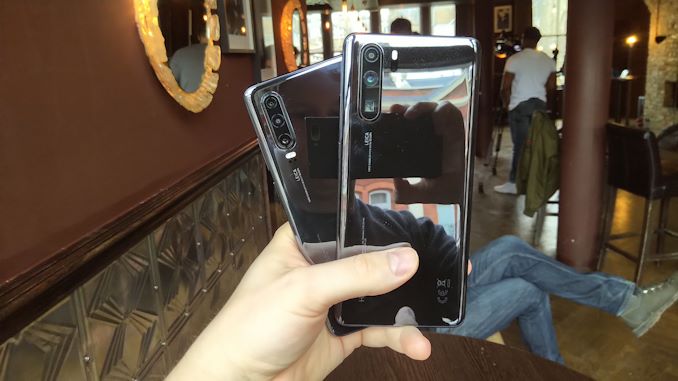
The latest update in Huawei’s P series smartphones are the new P30 and P30 Pro handsets, launched today in Paris. These new devices hope to push the reason why the P series exists – to go above and beyond when it comes to photography. The P30 and P30 Pro include Huawei’s new rear SuperSpectrum camera that allows more light into the sensor, and a front facing 32MP camera for better selfies.
P for Photography
Huawei has a very regular release schedule for its smartphones: in late Q3/Q4, it launches a new Mate series smartphone with the company’s latest processor and AI technology, designed to appeal to the early adopters who want the latest technology at their fingertips. Fast forward about six months, and Huawei typically launches a ‘P’ series smartphone, built on the same core hardware, but focusing much more on the photography features that typically appeal to the mass market. The idea is that the P series smartphone takes the faster processing power of the new chip, now six months old, and combines it with dedicated camera technology and Huawei’s latest updates in software and style, at a more comfortable price point.
The two new smartphones announced today are the 2019 updates to the P series: the Huawei P30 and Huawei P30 Pro, with the latter being the upsell model with enhanced features to go with an enhanced price.
The highlight of the smartphones this year is the new SuperSpectrum camera sensor, which is featured on both smartphones. This new sensor readjusts how it records light coming into it: most camera sensors are RGGB, meaning that each pixel has one red sensor, two green sensors, and a blue sensor, which it then combines into the correct color for that pixel. This new sensor replaces those two green sub-pixels with two yellow ones, to make the sensor sensitive to RYYB instead.
According to Huawei, based on the intensity of light typically absorbed into a camera module and through the lenses, this allows for more light into the sensor, and thus more detail. Using a yellow sub-pixel also allows for additional red and green absorption, enhancing red colors, which can be deficient (according to Huawei) in modern smartphone photography. This allows for additional features in the hardware, or better quality, such as an enhanced Night Shot mode. Huawei claims that in order to support this feature, both the hardware and the software for the camera implementation had to be redesigned from the ground-up.
This new sensor introduces two features: Super HDR Shot and Super Low Light Shot, both of which promise better color reproduction in variable brightness and low-light scenarios. The Super Low Light Shot, as the name suggests, attempts to draw more detail from limited light scenarios, similar to low light modes in other smartphones, however Huawei wants to claim that theirs is the best.
Huawei has also made both smartphones support an ISO level of 409600, up from 102400 on the previous year models. How effective such a high ISO mode is questionable, given how grainy such a mode tends to be.
Also on both smartphones is a new periscope lens. This new camera and lens allows for 3x optical zoom on the P30 and 5x zoom on the P30 Pro, or as the company will state, ‘up to 10x lossless hybrid zoom’ when combined with its additional software and data from other sensors. Huawei makes this possible by using a 90-degree prism lens in its telephoto sensor, providing a focal length of 125mm on the P30 Pro. As a result, it makes the camera look very deep into the device.
However, the demo photos we took with the mode show that it is very effective. Based on our third floor testing area, we were easily able to make out the person on the street putting in their PIN into the cash machine below.
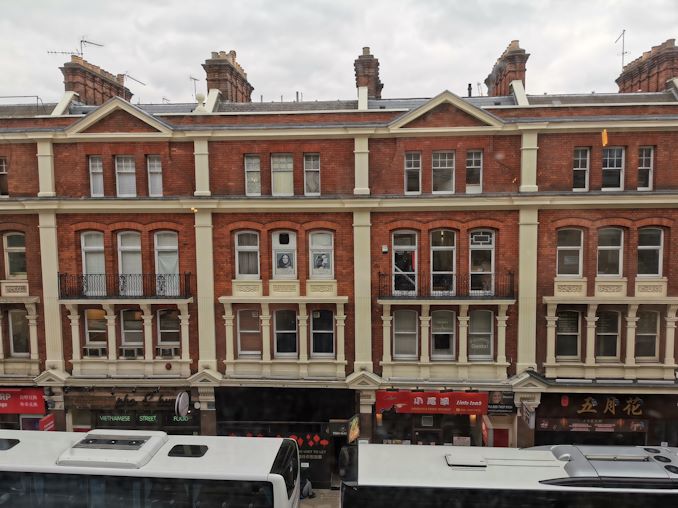

Taken with the P30 Pro at 10x hybrid zoom
Both smartphones – via a future over-the-air update – will also enable a ‘Dual Video’ mode, allowing a video to be taken with the SuperSpectrum camera and the telephoto camera at the same time. Both videos will be merged into a side-by-side video and saved as one file, which users can then upload to social media. It is expected that this feature will be enabled within a month or so. Standard video recording on both models is enabled up to 4K30, or 1080p60.
For the front facing cameras, Huawei has moved from a 24MP sensor to a 32MP sensor. In recent years, Huawei has implemented a PixelFusion technology on its big rear cameras that converts 4 pixels into 1, allowing for more detail in exchange for a lower image resolution – the SuperSpectrum sensor has it, however this new 32MP front facing sensor does not.
Both devices support AI enhanced stabilization modes, on top of the additional stabilization that specific cameras have. Both devices also use a HiSilicon Kirin 980 SoC to power the units, and built-in Goodix based in-screen fingerprint sensors (based on details at MWC, we believe these are Goodix’s second generation sensors, however Huawei does not disclose details about its suppliers).
From here on out, the models differ.
P30 Pro: The Best of the P Series
The P30 Pro is the larger model, with a 6.47-inch display and a 2340x1080 resolution for the OLED screen. The front and back of the device use curved glass, and the speaker at the top of the phone has been removed, replaced with an ‘Electromagnetic Levitation’ speaker that vibrates the screen to provide the sound you expect to hear during phone calls. Huawei states that this is designed to focus the sound into the ear.
The rear of the P30 Pro gives us a 3+1 camera sensor layout. What we get, from top to bottom, is:
- A 20MP ultra-wide-angle camera, with a 16mm focal length and f/2.2.
- The 40MP SuperSpectrum camera that has PixelFusion technology, a 27mm focal length, f/1.6, and also has optical image stabilization (OIS).
- An 8MP telephoto camera, supporting 5x optical (10x lossless hybrid) zoom, with a 125mm focal length and f/3.4, also supporting OIS.
The ‘plus one’ sensor is a Time-Of-Flight sensor, similar to what we’ve seen on other devices such as the LG G8. This includes a flood illuminator which works with the ToF to provide depth information for photo layering effects such as background replacement (used with AI) and live variable bokeh. Using the AI features of the phone with the ToF sensor also allows the P30 Pro to measure height and length by pointing the camera at an object/person in range.
The P30 Pro has a 4200 mAh battery, supports 40W wired charging (good for 70% in 32 minutes), but also supports 15W wireless charging, as well as wireless reverse charging, similar to the Mate 20 Pro. The P30 Pro does not have a 3.5mm jack, whereas the P30 does. The P30 Pro is IP68 rated for dust and water, similar to last year.
P30: The Cost-Effective Variant
The P30 is a little smaller, at 6.1 inches, but has the same 2340x1080 resolution as the P30 Pro, which actually makes the screen a little bit sharper due to a higher pixel density. It is still the same type of OLED screen, but the device does not use the same curved glass design, opting for a simpler feel.
The camera arrangement on the P30 is slightly different to the Pro. It still has three cameras, top to bottom:
- A 16MP ultra-wide-angle camera, f/2.2
- The 40MP SuperSpectrum camera, f/1.8, but no OIS
- An 8MP telephoto camera, supporing 3x optical (5x lossless hybrid), f/2.4, with OIS
The ultra-wide camera is only 16MP, not 20MP, and the SuperSpectrum has no OIS, and the telephoto camera doesn’t zoom as much. But this is all part of the upsell, tempting users towards the P30 Pro. There is no time-of-flight sensor here, but overall the camera setup is still formidable. AI stabilization is still supported for longer exposure shots, and feature such as Super HDR Shot, Super Low Light Shot, and that 400K ISO are still present.
As the phone is slightly smaller, the battery is 3650 mAh, which again is still sizeable, and the device supports 22.5W wired charging, which is good for 58% in 30 minutes. Unfortunately there no wireless charging on this model, but it does have a 3.5mm audio jack! Similar to last year, the P30 is IP53 rated.
Other Features
Both devices will come shipped with that latest version of EMUI 9.1, which is Android Pie-based. This means that the latest AI features are included, as are the impressive GPU Turbo on certain games, performance mode, enhanced security, and payment options (with specific vendors to be named at the launch event). Huawei states that there are 1500 software developers globally specifically focusing on its implementation of its AI SDK, making applications for a wide spectrum of use cases, such as an app that helps track visual impairment in children, or allows for body movement recognition with additional depth information for in-game character creation.
| Huawei P30 Series | |||||
| P30 Pro | AnandTech | P30 | |||
| 6.47-inch 2340x1080 OLED |
Display | 6.1-inch 2340x1080 OLED |
|||
| Kirin 980 | SoC | Kirin 980 | |||
| 8 GB | DRAM | 6 GB | |||
| 128, 256, 512 GB | Storage | 128 GB | |||
| 20MP Ultrawide, f/2.2 40MP SuperSpectrum, f/1.6, OIS 8MP Telephoto, f/3.4, OIS |
Rear Camera | 16MP Ultrawide, f/2.2 40MP SuperSpectrum, f/1.8 8MP Telephoto, f/2.4, OIS |
|||
| 32MP | Front Camera | 32MP | |||
| IP68 | IP Rating | IP53 | |||
| 4200 mAh 40W Wired Charge 15W Wireless Charge |
Battery | 3650 mAh 22.5W Wired Charge |
|||
| Dual Nano SIM Huawei Nano-SD |
SIM | Dual Nano SIM Huawei Nano-SD |
|||
| LTE 802.11ac BT |
Wireless | LTE 802.11ac BT |
|||
| USB Type-C | Other Features | USB Type-C 3.5mm Jack |
|||
| 8 GB + 128 GB: 999 Euro 8 GB + 256 GB: 1099 Euro 8 GB + 512 GB: 1249 Euro |
Price | 6 GB + 128 GB: 799 Euro | |||
Huawei also showcased that it has partnered with Audi to support seven vehicle models as a digital car key. With the correct app, users of supported models can lock/unlock their cars, start the engine, or get the heater ready in the morning. Huawei states that their software stack supports CC and EMVCo security authentication, two common standards in this space.
Also supported are OneHop and Huawei Share with supported Huawei notebooks, such as the Matebook 13, Matebook 14, and Matebook X Pro announced earlier this year.
Colors
One of the features of the P series is also the color styling. Huawei is consistently providing its Aurora color scheme on its phones as of late, and the P30 gets this as well. This year however, Huawei is keen to promote that its color schemes are still embedded in natural colors, but they’re mixing it up with ‘transcendent iridescence’, ‘pearlescence’ and ‘translucence’. I’m sure marketing had fun with those descriptions. What that means for the end user is that there will be five colors coming to market:
- Signature Aurora (a light blue and white)
- Breathing Crystal (a darker blue to white)
- Amber Sunrise (red to light orange)
- Pearl White
- Black
Both the P30 and P30 Pro will be available in all five colors, however which colors are available in different regions will depend on which models carriers will want to stock.
Other Details We Are Waiting For
All of our details here so far (if you’re reading this straight after we posted) came from a pre-briefing we had before the official announcement. Huawei always keeps certain details behind to be announced at the event, specifically release dates and pricing. In this instance, they’ve also held back details on memory and storage, although our demo units had 6 GB of DRAM and 128 GB of storage, so we can guess that they will be. We will update this story as we get this information.
The P30 and P30 Pro certainly have enough differences between them that there’s going to be around $200 difference between a standard 6/128 model in both. The question is, for that extra $200, is it worth the extra OIS, bigger sensor, more zoom, ToF sensor, bigger display, wireless charging, and a better IP rating? The upsell is strong with this one.
Hopefully we will be picking up our review units today, and we’ll look into a review as soon as we can.
Update: Added pricing, DRAM, and storage to table.
Related Reading
- LG Announces The New G8 & V50 5G ThinQ
- Nokia 9 PureView: Hands On, Impressions, Thoughts
- A 32 MP Selfie Camera on ZTE's Blade V10: Because You Love Yourself
- The Sony Xperia 1: A Long 21:9 HDR 4K OLED Smartphone
- Huawei Mate X vs. Samsung Galaxy Fold: Ask the Press
- Samsung Galaxy S10: First Exynos 9820 vs Snapdragon 855 Scores


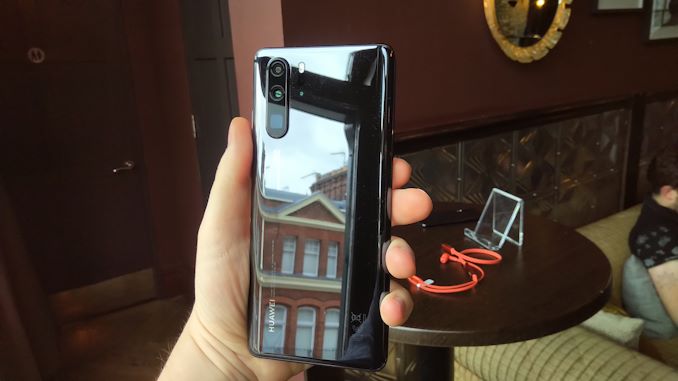
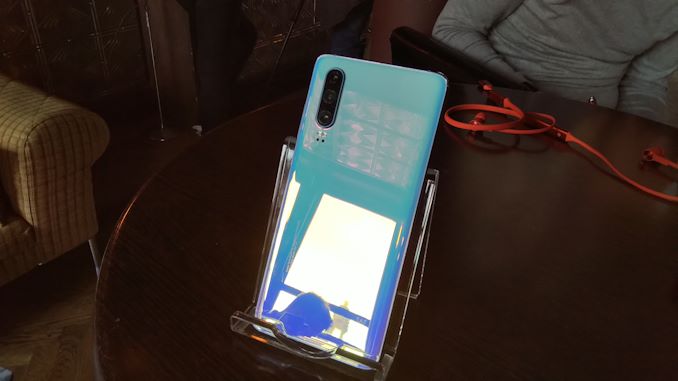
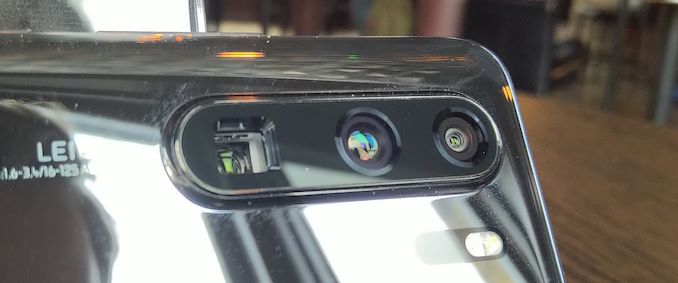
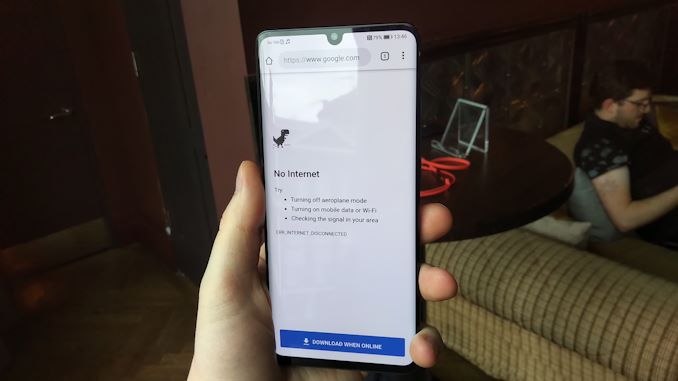
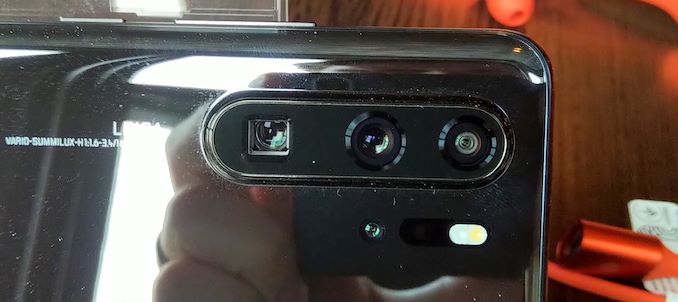

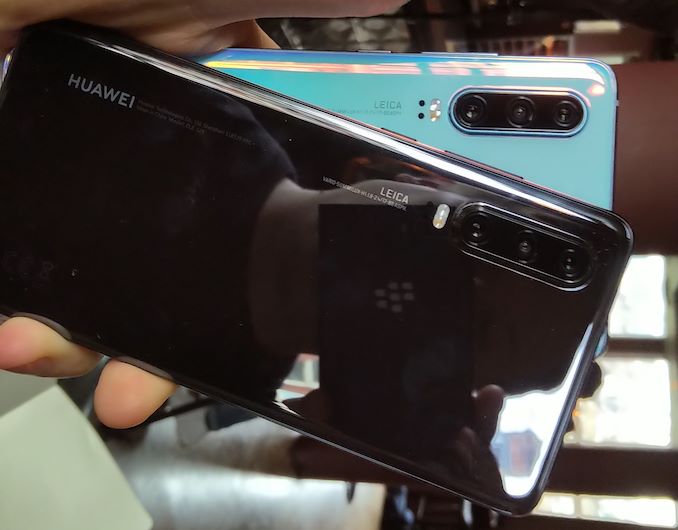
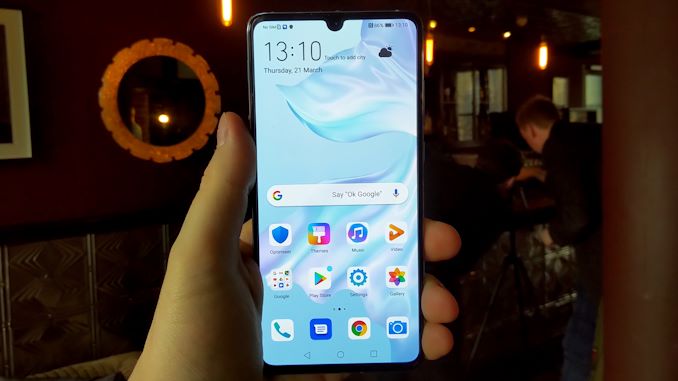








56 Comments
View All Comments
philehidiot - Sunday, March 31, 2019 - link
I think you have a point on the resolution. I saw that it was 1080P at ~6" and I was put off immediately. I think 1440P is required at this screen size unless you're using LCD where you can just get away with it. I suspect a couple of things are going on here and one of them will be that this phone is now directly competing with Samsung's offerings and guess who makes the nice Samsung OLED screens? Er.... Samsung... So I suspect that if they wanted the contrast and power benefits of OLED then they had to go with whatever they could get which may have been Samsung saying they'd sell them 1080P screens or it may be a different manufacturer. If this had been a "value flagship" I'd have been happy with this but when you're asking the best part of a grand, you simply can't offer 1080 at this size in OLED unless you've resolved (geddit?) the pentile array issues.I think you're being a little unreasonable comparing it to a high end dedicated camera. They aren't comparable and I know I don't have the money to get a decent phone and a decent camera. I just don't and I won't. You're comparing a £500 dedicated camera to what's basically an entire computer with a camera system and mobile capability. Of course, the dedicated camera is going to be better. And a DSLR will, of course, decimate smartphones but if you can fit one in your pocket, you're doing well. A DSLR is a pain in the arse to lug around, requires skill and knowledge and the correct use of one is an art form which must be taken seriously. A camera phone..... not so much.
I'm also not sure where the politics come in. Yes there are issues in integrating Chinese technology into core, critical infrastructure but that'd be the same with any third party nation or foreign company (unless it was a company in an allied country and they allowed you adequate vetting procedures). China has its best interests in mind when doing things. Duh, that's what countries do and definitely what the US does. If I was building critical communications infrastructure I would avoid foreign technology wherever possible (the US spied on the German Chancellor!) so your argument about China is somewhat odd. Yes, the EU has issues with ex commies and far left agendas, we agree but I do not see how that influences whether I should buy a phone or not. So Chinese tech makes it into an Audi? And?? AND?! As long as it works and people are paid appropriately I couldn't care less.
I think the arguments for not buying this phone are clear: same price as Samsung which has better software, screen may well be substandard resolution for the size (given the price) and the lack of a bootloader unlock. I don't tend to root my phones but I like to be able to in case I need to. The other thing I really don't like is the lack of a 3.5mm jack on the pro version. Crappy in-cable DACs and dongles are a solution to a problem that needn't exist. I shall be buying phones with a 3.5mm jack until I have no other option. I have never met a pair of Bluetooth headphones which aren't suffering one of the following; horrifically expensive (given I have bought decent wired ones already, why should I have to buy new?), easily lost, connection stability issues, compromised sound when compared to wired. USB-C dongles often have crappy DACs and prevent charging and listening at the same time (I do this regularly) as well as being something to just lose or break.
I've ranted long enough.
Kaleid - Wednesday, April 3, 2019 - link
"EU is a joke nowadays, look at their migration crisis due to far leftism and this "Wow, LOL. Except that most in the parliament are rightwingers and it's mostly rightwingers who want to go on their little imperial adventures in these countries and cause the refugee problems to begin with. Most refugees do not come to Europe though (about 6%) and Europe is still a lot safer than USA.
dudedud - Tuesday, March 26, 2019 - link
"as are the impressive GPU Turbo on certain games"Was that sarcasm, a press release or for real?
Ian Cutress - Tuesday, March 26, 2019 - link
We tested GPU Turbo - it's an innovative AI based technology and works. Downside is that it's game specific.https://www.anandtech.com/show/13285/huawei-gpu-tu...
dudedud - Wednesday, March 27, 2019 - link
Yes, i remember the article, but i do not remember to be called "impressive" or even useful, as you guys couldnt determinate if it was really a notable difference with and without it.cfenton - Tuesday, March 26, 2019 - link
I'll be interested to see photos from that zoom lens at f/3.4. That's a very narrow aperture for anything but sunlight. From my experience with the telephoto on the Galaxy S9+, it will probably have trouble indoors. I mostly use the telephoto outdoors anyway, but it is useful inside from time to time.Ian Cutress - Tuesday, March 26, 2019 - link
There's one of them in the newscfenton - Tuesday, March 26, 2019 - link
That's a pretty good situation for the camera, though. Outdoors and still subject. It's still impressive, of course, but I want to see it indoors (museum) or outdoors with a moving subject (dog or child). I find the Galaxy S9+ compensates for the narrower aperture by slowing down the shutter speed, which makes it harder to take photos of anything moving without getting blur. That's at f/2.4, and the P30 Pro goes much narrower to f/3.4. Maybe they can compensate with better ISO performance.BedfordTim - Tuesday, March 26, 2019 - link
Shame you can't get the best cameras in the smaller form factor. I could live with an extra 1mm thickness to squeeze the cameras into the P30 but the Pro is just too big for me.techgadgetgeek - Tuesday, March 26, 2019 - link
I don’t see the new P30 Pro having LTE Bands to support T-Mobile and Verizon LTE Bands for those who travel internationally. Single speaker also? Any comments on audio quality and speaker sound volume? What cell signal and Wi-Fi signal reception strength? Seems like only focus is on camera only which we now know is pretty good.